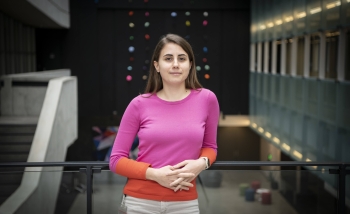When Cohl Furey was a graduate student at Perimeter Institute and the University of Waterloo, she came across some intensely peculiar mathematical objects: eight-dimensional numbers called “octonions.”
Discovered in 1843, octonions were regarded as intriguing but having no discernible use. But not everyone felt that way.
Over the years, individual researchers studying these mathematical objects developed a suspicion that they held a deep connection to mysteries at the very heart of the universe.
Furey is the latest in that tradition. As this long-read at Quanta explains, her work at the University of Cambridge is pushing our understanding of octonions, and could pull together fundamental physics and pure math.
“If this research project were a murder mystery,” Furey told Quanta, “I would say that we are still in the process of collecting clues.”
Read the full article, and watch Furey’s videos explaining octonions.
About PI
Perimeter Institute is the world’s largest research hub devoted to theoretical physics. The independent Institute was founded in 1999 to foster breakthroughs in the fundamental understanding of our universe, from the smallest particles to the entire cosmos. Research at Perimeter is motivated by the understanding that fundamental science advances human knowledge and catalyzes innovation, and that today’s theoretical physics is tomorrow’s technology. Located in the Region of Waterloo, the not-for-profit Institute is a unique public-private endeavour, including the Governments of Ontario and Canada, that enables cutting-edge research, trains the next generation of scientific pioneers, and shares the power of physics through award-winning educational outreach and public engagement.
You might be interested in

What is it like to be part of an underrepresented gender identity in physics?
February 9, 2024

